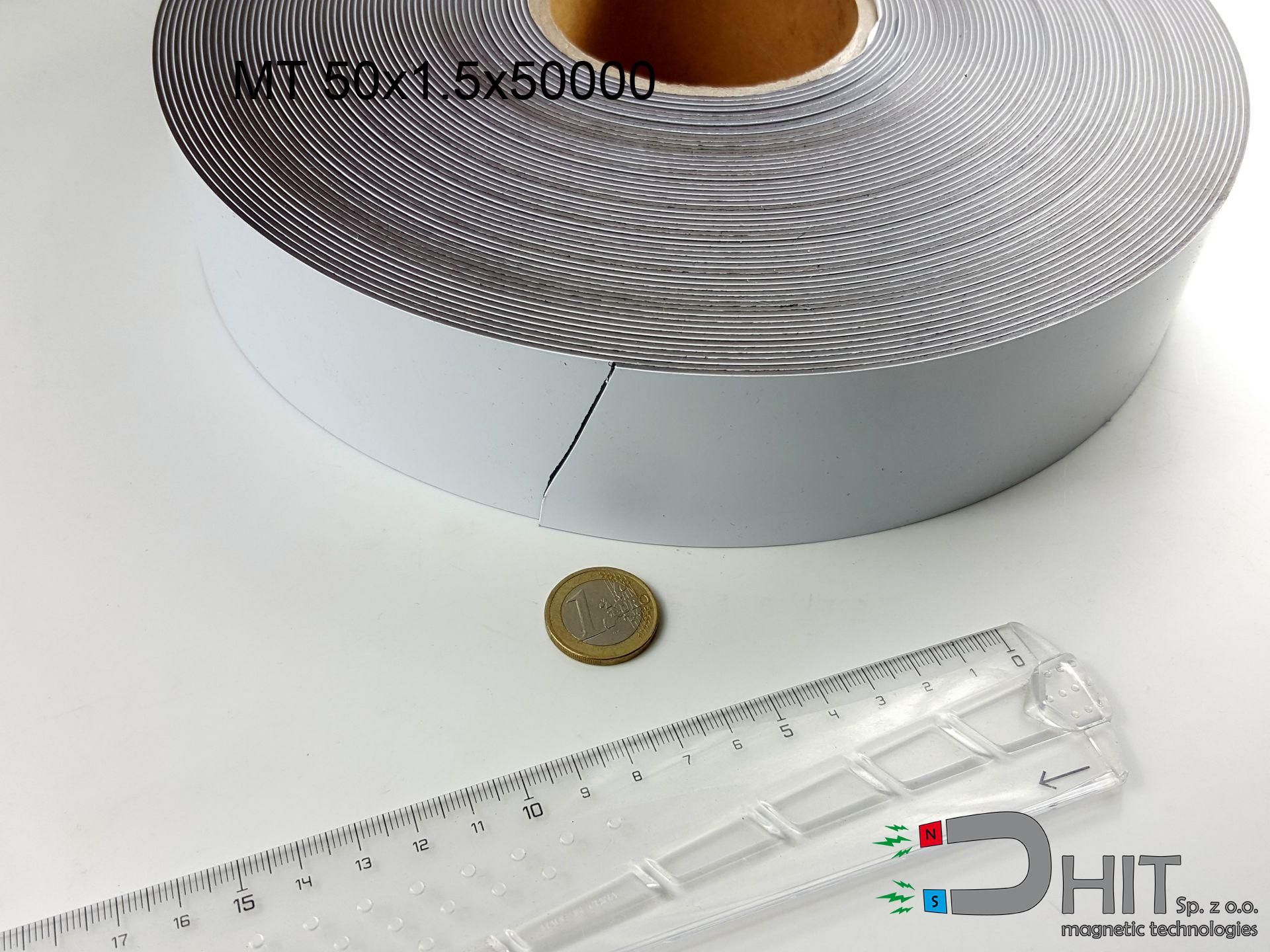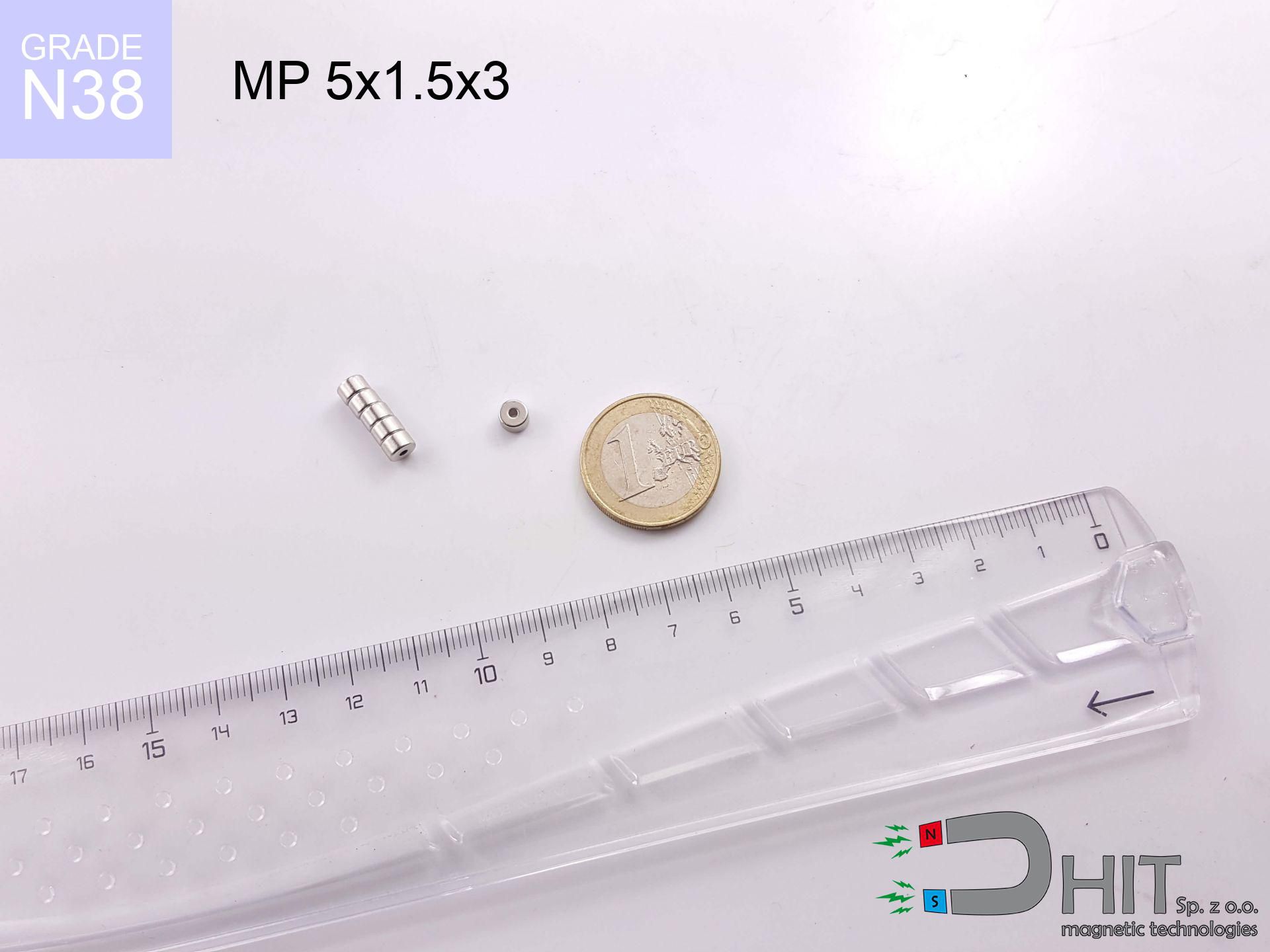MT 50x1.5x50000 - magnetic tape
magnetic tape
Catalog no 380511
length
50 mm [±1 mm]
Width
1.5 mm [±1 mm]
Height
50000 mm [±1 mm]
430.50 ZŁ with VAT / pcs + price for transport
350.00 ZŁ net + 23% VAT / pcs
bulk discounts:
Need more?Looking for a better price?
Pick up the phone and ask
+48 888 99 98 98
if you prefer get in touch via
request form
the contact section.
Force as well as structure of neodymium magnets can be checked on our
magnetic calculator.
Orders placed before 14:00 will be shipped the same business day.
MT 50x1.5x50000 - magnetic tape
Specification / characteristics MT 50x1.5x50000 - magnetic tape
| properties | values |
|---|---|
| Cat. no. | 380511 |
| Production/Distribution | Dhit sp. z o.o. |
| Country of origin | Poland / China / Germany |
| Customs code | 85059029 |
| length | 50 mm [±1 mm] |
| Width | 1.5 mm [±1 mm] |
| Height | 50000 mm [±1 mm] |
| Manufacturing Tolerance | ±1 mm |
Magnetic properties of material
| properties | values | units |
|---|
Physical properties of sintered neodymium magnets Nd2Fe14B at 20°C
| properties | values | units |
|---|---|---|
| Vickers hardness | ≥550 | Hv |
| Density | ≥7.4 | g/cm3 |
| Curie Temperature TC | 312 - 380 | °C |
| Curie Temperature TF | 593 - 716 | °F |
| Specific resistance | 150 | μΩ⋅Cm |
| Bending strength | 250 | Mpa |
| Compressive strength | 1000~1100 | Mpa |
| Thermal expansion parallel (∥) to orientation (M) | (3-4) x 106 | °C-1 |
| Thermal expansion perpendicular (⊥) to orientation (M) | -(1-3) x 10-6 | °C-1 |
| Young's modulus | 1.7 x 104 | kg/mm² |
Other products
Pros and cons of rare earth magnets.
Apart from their consistent magnetism, neodymium magnets have these key benefits:
- They do not lose magnetism, even during approximately ten years – the drop in power is only ~1% (theoretically),
- Neodymium magnets remain extremely resistant to loss of magnetic properties caused by external field sources,
- The use of an refined layer of noble metals (nickel, gold, silver) causes the element to present itself better,
- The surface of neodymium magnets generates a maximum magnetic field – this is one of their assets,
- Made from properly selected components, these magnets show impressive resistance to high heat, enabling them to function (depending on their form) at temperatures up to 230°C and above...
- Thanks to modularity in constructing and the ability to adapt to complex applications,
- Universal use in modern industrial fields – they serve a role in computer drives, brushless drives, medical equipment, as well as multitasking production systems.
- Thanks to their power density, small magnets offer high operating force, in miniature format,
Disadvantages of neodymium magnets:
- Susceptibility to cracking is one of their disadvantages. Upon intense impact they can break. We advise keeping them in a strong case, which not only protects them against impacts but also raises their durability
- Neodymium magnets lose their strength under the influence of heating. As soon as 80°C is exceeded, many of them start losing their power. Therefore, we recommend our special magnets marked [AH], which maintain durability even at temperatures up to 230°C
- When exposed to humidity, magnets usually rust. For applications outside, it is recommended to use protective magnets, such as those in rubber or plastics, which prevent oxidation and corrosion.
- We recommend casing - magnetic mechanism, due to difficulties in creating nuts inside the magnet and complex shapes.
- Possible danger resulting from small fragments of magnets are risky, if swallowed, which gains importance in the context of child health protection. Furthermore, small components of these products can complicate diagnosis medical after entering the body.
- Due to expensive raw materials, their price exceeds standard values,
Detachment force of the magnet in optimal conditions – what it depends on?
The force parameter is a theoretical maximum value performed under specific, ideal conditions:
- using a sheet made of high-permeability steel, acting as a circuit closing element
- whose thickness equals approx. 10 mm
- characterized by lack of roughness
- without any insulating layer between the magnet and steel
- during detachment in a direction vertical to the plane
- at ambient temperature approx. 20 degrees Celsius
Determinants of lifting force in real conditions
In practice, the actual lifting capacity depends on a number of factors, presented from the most important:
- Distance – existence of any layer (rust, tape, gap) interrupts the magnetic circuit, which reduces power steeply (even by 50% at 0.5 mm).
- Angle of force application – highest force is available only during pulling at a 90° angle. The force required to slide of the magnet along the surface is standardly many times lower (approx. 1/5 of the lifting capacity).
- Steel thickness – too thin plate causes magnetic saturation, causing part of the flux to be escaped into the air.
- Metal type – different alloys attracts identically. Alloy additives worsen the attraction effect.
- Surface condition – ground elements guarantee perfect abutment, which increases field saturation. Uneven metal reduce efficiency.
- Heat – neodymium magnets have a negative temperature coefficient. At higher temperatures they are weaker, and in frost they can be stronger (up to a certain limit).
* Lifting capacity testing was conducted on a smooth plate of optimal thickness, under a perpendicular pulling force, in contrast under shearing force the load capacity is reduced by as much as 5 times. In addition, even a slight gap {between} the magnet’s surface and the plate decreases the lifting capacity.
Precautions when working with neodymium magnets
Health Danger
Patients with a pacemaker must keep an large gap from magnets. The magnetic field can stop the operation of the life-saving device.
Metal Allergy
Studies show that the nickel plating (standard magnet coating) is a strong allergen. If you have an allergy, prevent touching magnets with bare hands or select encased magnets.
Cards and drives
Powerful magnetic fields can erase data on credit cards, hard drives, and other magnetic media. Keep a distance of min. 10 cm.
Impact on smartphones
GPS units and mobile phones are extremely susceptible to magnetism. Direct contact with a powerful NdFeB magnet can permanently damage the sensors in your phone.
Physical harm
Large magnets can crush fingers in a fraction of a second. Do not put your hand betwixt two strong magnets.
Do not underestimate power
Exercise caution. Rare earth magnets attract from a distance and snap with huge force, often quicker than you can react.
Risk of cracking
Beware of splinters. Magnets can explode upon uncontrolled impact, launching shards into the air. Wear goggles.
Permanent damage
Watch the temperature. Heating the magnet above 80 degrees Celsius will permanently weaken its magnetic structure and strength.
Machining danger
Powder created during grinding of magnets is self-igniting. Do not drill into magnets without proper cooling and knowledge.
Adults only
NdFeB magnets are not suitable for play. Accidental ingestion of a few magnets may result in them pinching intestinal walls, which constitutes a severe health hazard and requires urgent medical intervention.
Important!
Need more info? Check our post: Are neodymium magnets dangerous?



![SM 32x125 [2xM8] / N52 - magnetic separator SM 32x125 [2xM8] / N52 - magnetic separator](https://cdn3.dhit.pl/graphics/products/sm-32x125-2xm8-moj.jpg)




